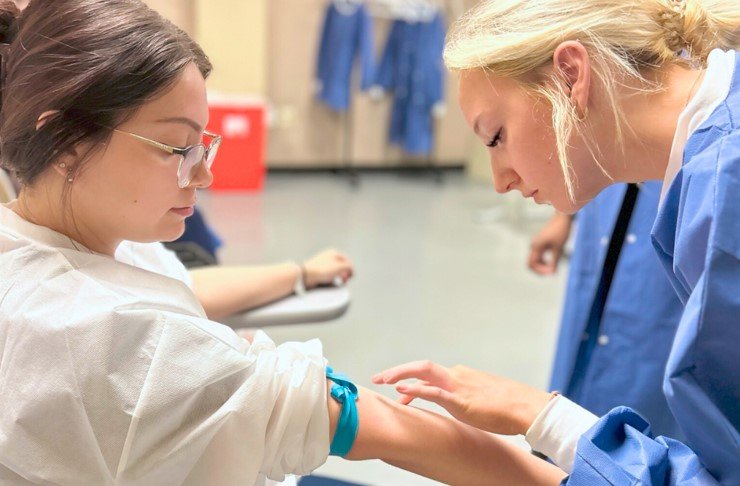Strategies for Efficient Supply and Equipment Management in Hospital Phlebotomy Services
Summary
- Hospitals are adapting their supply and equipment management strategies to meet the growing demand for phlebotomy services in the United States.
- Efficient inventory management and prioritizing the purchase of phlebotomy supplies and equipment are essential for hospitals to meet patient needs.
- Utilizing technology, implementing lean practices, and focusing on staff training are key components of successful supply and equipment management in the context of phlebotomy services.
Phlebotomy, the practice of drawing blood from patients for various medical tests and procedures, is a critical aspect of healthcare delivery in hospitals across the United States. With the rise in chronic diseases, aging population, and advancements in medical diagnostics, the demand for phlebotomy services has been steadily increasing. As a result, hospitals are facing the challenge of adjusting their supply and equipment management strategies to accommodate this growing demand.
Challenges in Supply and Equipment Management
As hospitals strive to meet the increasing demand for phlebotomy services, they encounter several challenges in managing their supply and equipment effectively. Some of the key challenges include:
- Inventory Management: Keeping track of phlebotomy supplies and ensuring adequate stock levels can be a daunting task for hospitals, especially when faced with fluctuating demand.
- Equipment Maintenance: Maintaining Phlebotomy Equipment in proper working condition is crucial for ensuring accurate and efficient blood draws. Regular maintenance and calibration are essential but can be time-consuming.
- Staff Training: Proper training and education of phlebotomists and other healthcare staff on the use of supplies and equipment are essential for providing high-quality phlebotomy services. However, ongoing training can pose challenges in terms of time and resources.
Adapting Supply and Equipment Management Strategies
To address these challenges and meet the increasing demand for phlebotomy services, hospitals are adapting their supply and equipment management strategies in several ways. Some of the key strategies include:
Utilizing Technology
Implementing technology solutions such as inventory management software can help hospitals streamline their Supply Chain processes, track inventory levels in real-time, and automate reordering of supplies. This can help reduce the risk of stockouts and unnecessary stockpiling of supplies, leading to cost savings and improved efficiency.
Implementing Lean Practices
Adopting lean principles in supply and equipment management can help hospitals eliminate waste, optimize processes, and improve overall efficiency. Practices such as just-in-time inventory management, standardizing supply ordering processes, and continuous improvement initiatives can help hospitals better meet the demand for phlebotomy services while minimizing costs.
Focus on Staff Training
Investing in staff training and education is crucial for ensuring that healthcare professionals are proficient in phlebotomy techniques and equipment usage. Regular training programs, competency assessments, and refresher courses can help improve the quality of phlebotomy services and enhance patient safety.
Meeting Patient Needs
By implementing these supply and equipment management strategies, hospitals can better meet the needs of patients requiring phlebotomy services. Efficient inventory management, proper equipment maintenance, and staff training are essential components of ensuring that hospitals are equipped to handle the increasing demand for blood draws and diagnostic testing.
Conclusion
As the demand for phlebotomy services continues to rise in the United States, hospitals must adapt their supply and equipment management strategies to meet patient needs effectively. By utilizing technology, implementing lean practices, and focusing on staff training, hospitals can optimize their operations, improve efficiency, and enhance the quality of phlebotomy services provided to patients.

Disclaimer: The content provided on this blog is for informational purposes only, reflecting the personal opinions and insights of the author(s) on the topics. The information provided should not be used for diagnosing or treating a health problem or disease, and those seeking personal medical advice should consult with a licensed physician. Always seek the advice of your doctor or other qualified health provider regarding a medical condition. Never disregard professional medical advice or delay in seeking it because of something you have read on this website. If you think you may have a medical emergency, call 911 or go to the nearest emergency room immediately. No physician-patient relationship is created by this web site or its use. No contributors to this web site make any representations, express or implied, with respect to the information provided herein or to its use. While we strive to share accurate and up-to-date information, we cannot guarantee the completeness, reliability, or accuracy of the content. The blog may also include links to external websites and resources for the convenience of our readers. Please note that linking to other sites does not imply endorsement of their content, practices, or services by us. Readers should use their discretion and judgment while exploring any external links and resources mentioned on this blog.

